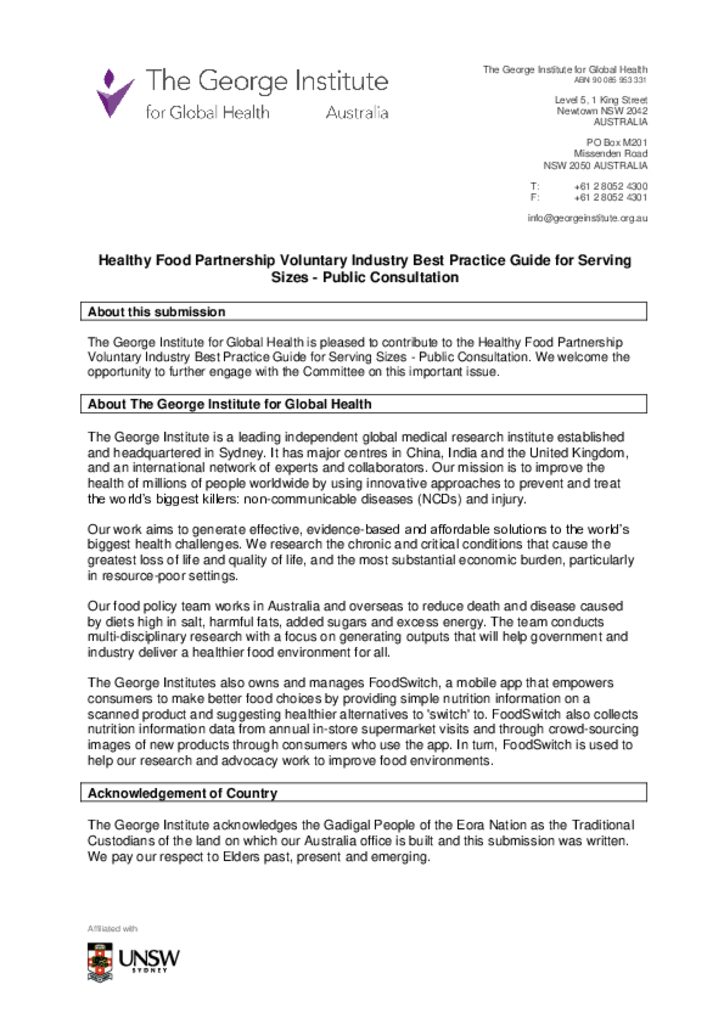
The George Institute calls for improvements to government guide on serving sizes
The George Institute for Global Health has made a submission to the Australian Government’s Department of Health Public Consultation on the Healthy Food Partnership Voluntary Industry Best Practice Guide for Serving Sizes. The submission argues that the guidelines in their current form are not ‘best practice’ as they lack many important features that help to ensure they’re effective, such as:
- clear timeframes for implementation;
- plans for independent and transparent reporting on the uptake of the serving size guidelines; and
- details of monitoring and evaluation initiatives to assess the impact of the serving size guidelines on the food supply and on Australian diets.
Daisy Coyle, Dietitian and Research Fellow at The George Institute, said while setting portion and serving size goals may help reduce rates of diet-related diseases, they need to be properly developed and implemented to result in any meaningful change.
“We agree with colleagues at the Cancer Council and Heart Foundation that portion guidance and serving size goals are good for public health, but more work is needed to encourage food companies to reduce the size of their products,” she said.
“Our research on how the Government’s previous Food and Health Dialogue initiative performed, and our modelling work on the likely impact of its successor, the Healthy Food Partnership, indicate it’s unlikely these serving size goals will have a significant impact. This is concerning given many of the so-called discretionary foods included in the portion size guidelines are not subject to the government’s reformulation targets despite being high contributors to total sodium, added sugar and saturated fat intakes,” Daisy added. “Also, these guidelines are voluntary, which further limits their potential to significantly improve the health of Australians.”
While having national portion guidance and serving size goals is important for public health, The George Institute submission raises concerns that the proposed serving size guidelines will not reduce intakes of excess kilojoules, sodium, added sugars and saturated fat enough to ease the burden of diet-related disease in Australia.






